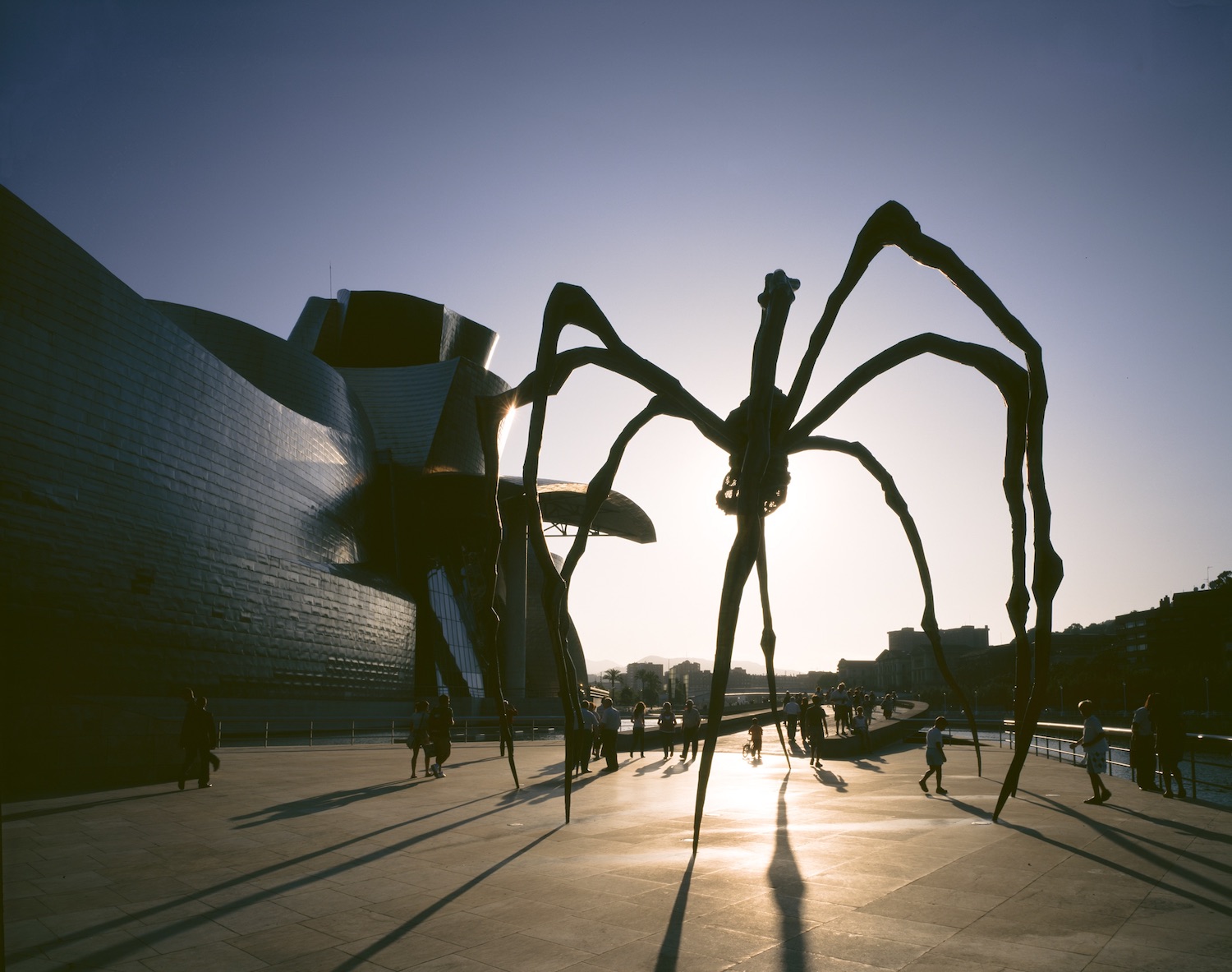
Wedged between the mountains and just inland from the Bay of Biscay, Bilbao is a city renowned for delicious food and drink, and art both old and new. It’s a relatively new transformation for the Basque port town, which was previously known for being a bit down-at-heel due to post-industrial decline. Then came the Guggenheim Bilbao, an enormous and curvaceous scramble of contemporary architecture designed by Frank Gehry. This was quickly followed by several metro stations conceived by Norman Foster (known locally as “fosteritos”) and the Azkuna Zentroa, redeveloped by Philippe Starck, bringing the starchitect allure that has cemented Bilbao’s position as an important cultural destination.
For most, the Guggenheim is undoubtedly the first landmark on the sightseeing list. The enormous riverside structure is accompanied by several external sculptures, including a Louise Bourgeois spider (and the odd street trader selling their own arachnid trinkets). Also to be found is Jeff Koons’s gargantuan floral puppy, or more specifically, a depiction of a West Highland terrier carpeted in bedding plants in what the museum describes as a “monument to the sentimental.”
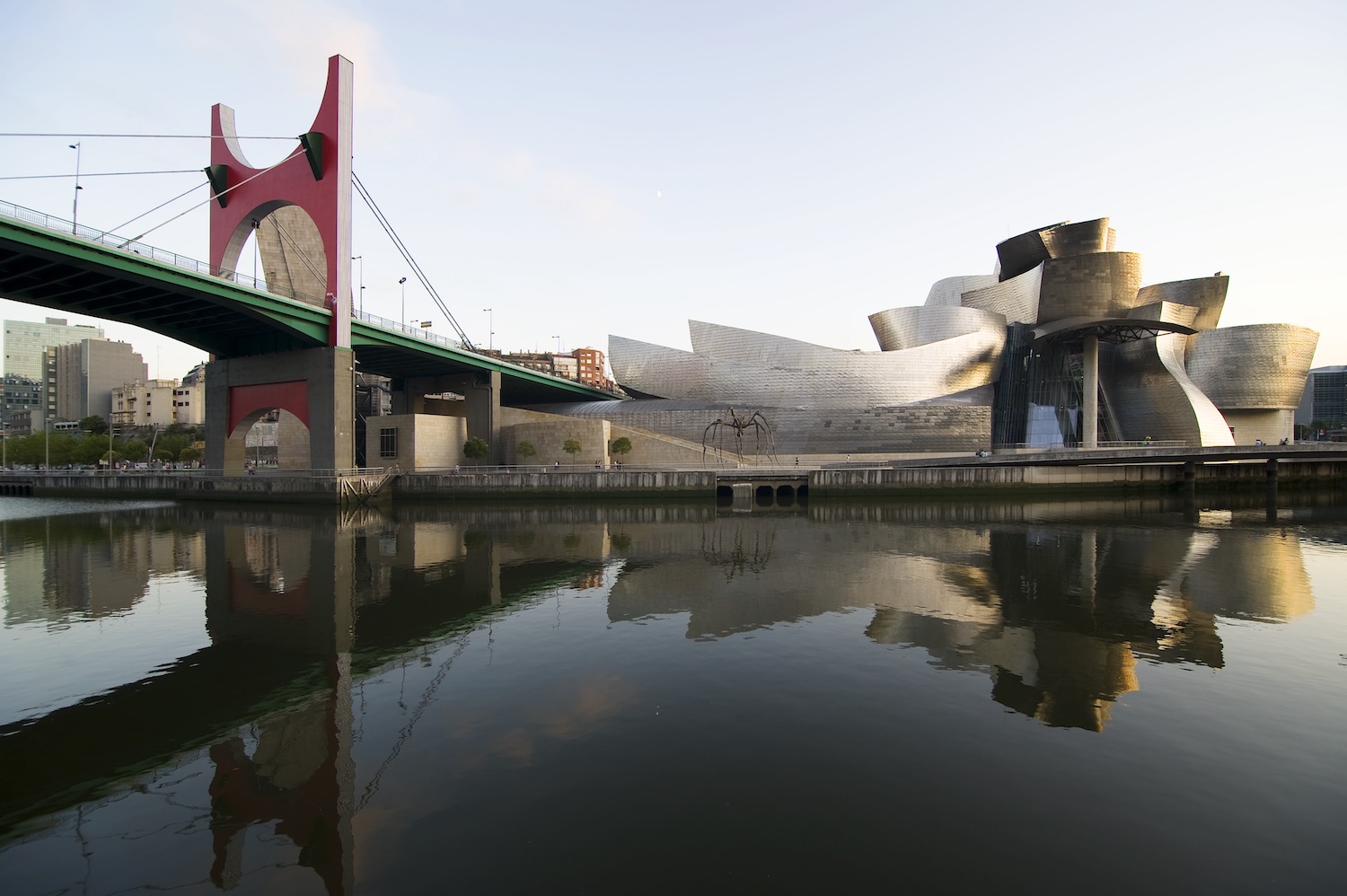
Inside, works from the collection include some unfathomably massive Richard Serra steel structures that play with simple forms such as spirals, waves and ellipses, doubling down on the dizzying undulation of Gehry’s building. Visitors can walk among the Serra installation, or take in the view from an upper viewing deck, which also offers a great vantage point to enjoy Jenny Holzer’s aptly named Installation for Bilbao. It consists of nine LED columns emblazoned with moving slogans in English, Spanish and Basque. “The walls in my gallery are impossibly and beautifully curvy,” says Holzer, “So in response I decided to go rigid.”

Beyond the permanent galleries, the Guggenheim has a rich programme of temporary exhibitions. Right now, it is presenting three concurrent shows. The first (until 2 September) is a survey of Marc Chagall’s “breakthrough years” covering the years immediately prior to the First World War when he worked in Paris, as well his time spent in his native Russian home, where he was forced to remain throughout the conflict. Two contemporary offerings come in the form of Joana Vasconcelos’s I’m Your Mirror (until 11 November). It features an array of large sculptures born from unusual materials, such as a huge gun fashioned from rotary phones and a Venetian mask formed from ornate mirrors. Lastly, Venezuelan Javier Teller presents Shadow Play, which engages with ideas of migration, refuge and art history through monochrome projections.
“Bilbao is a city renowned for delicious food and drink, and art both old and new”
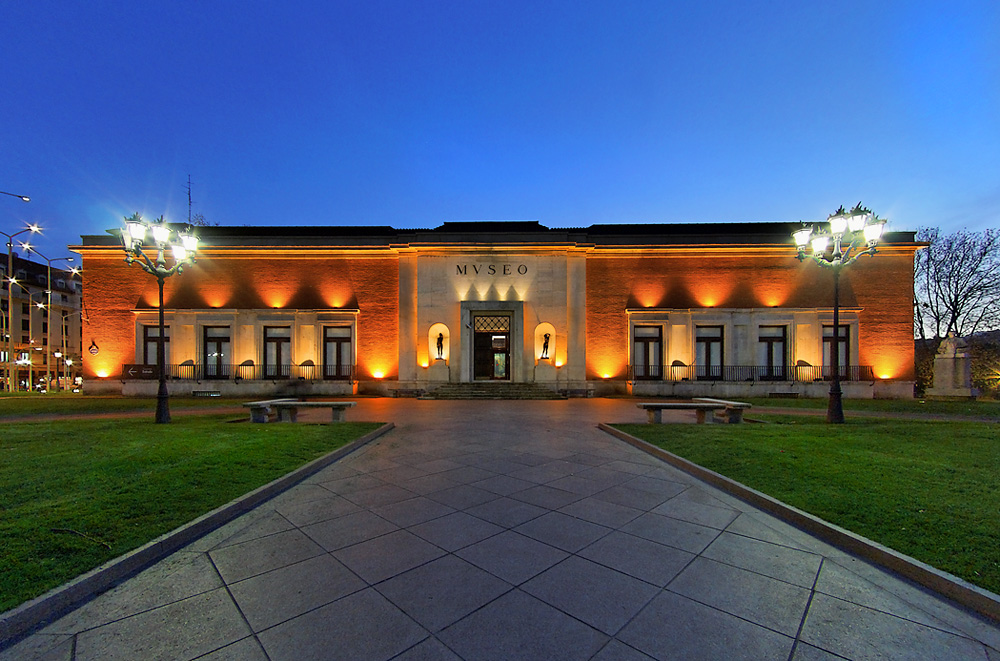
After so much art viewing, refreshments are in order. Luckily the museum offers Michelin-starred cuisine at Nerue, or for a more casual affair head to the bistro, which has a full menu and an ample terrace—great for enjoying city views with a beer.
Through the park and on the other side of the Euskadi Plaza, you will find the Museum of Fine Arts of Bilbao, with a collection that spans everything from El Greco to Francis Bacon. This year the institution is celebrating its 110th anniversary with an exhibition of 110 highlights drawn from its holdings. Shown alongside are two madcap video installations by Álvaro Perdices, Álvaro Perdices and filmmaker Andrés Sanz, which evoke the experience of viewing the Prado’s masterpieces by night and use multiple projections to create a sensory overload inspired by Bosch’s Garden of Earthly Delights.
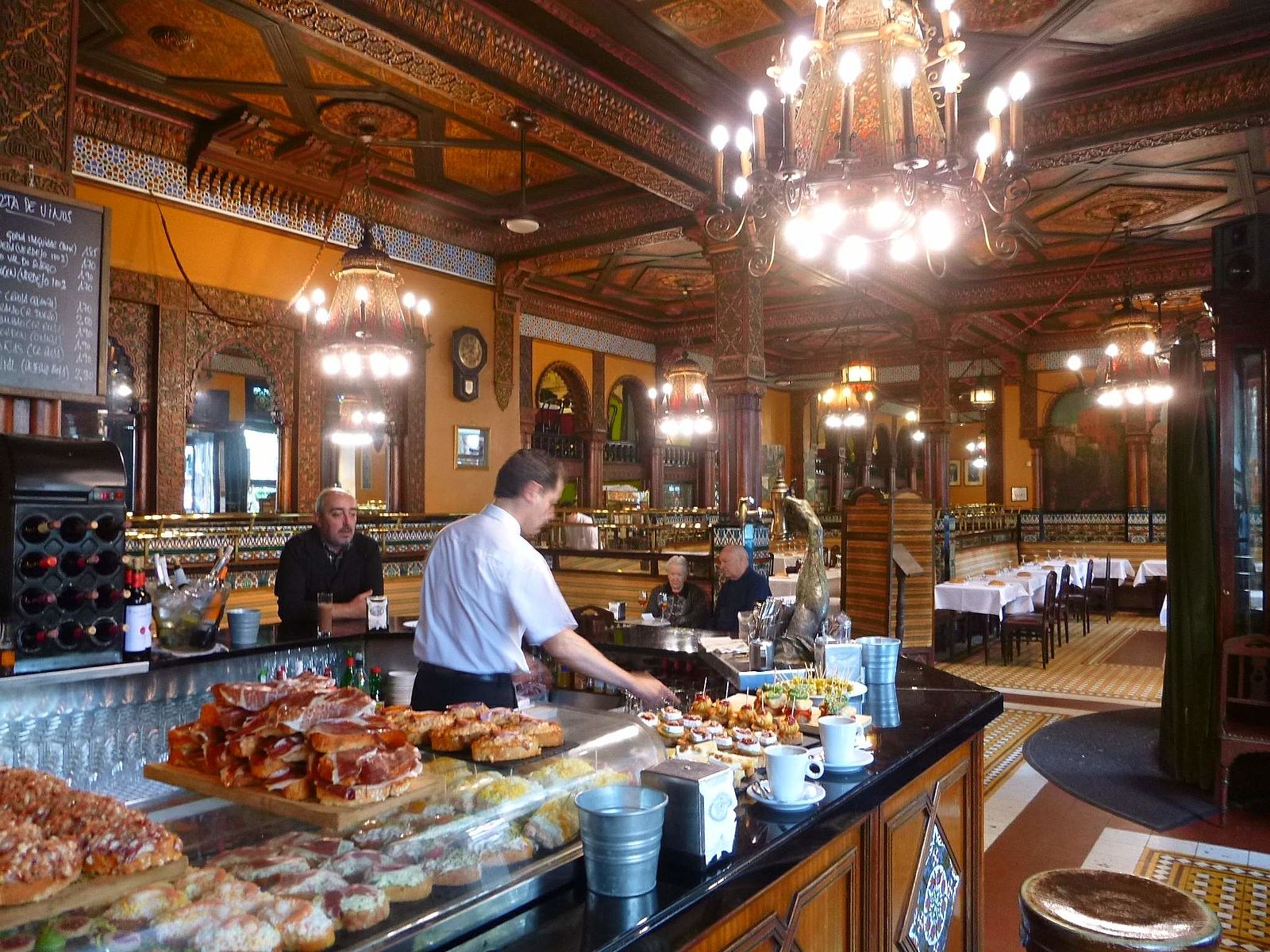
Café Iruña, Bilbao
“The Basque port town was previously known for being a bit down-at-heel due to post-industrial decline. Then came the Guggenheim Bilbao”
For an iconic Bilbao café experience head back towards the river to Café Iruña, a grand old art deco haunt that serves delicious pintxos (Basque tapas) among stained glass, murals and decorative tiles, all inspired by ancient Islamic palaces. For more authentic eateries head over the Areatzako Zubia bridge and make for Plaza Nueva. This neoclassical square features great dining spots tucked under the arches, including Cafe Bar Bilbao and Victor Montes, which sports a wonderful art nouveau façade.
Further down the river you will find Bilbao La Vieja, an area that has been crowned the city’s “hipster” district and sits just over the water from the historic old town. Alongside a multitude of shopping and bars, there are contemporary artist-led spaces such as Espacio Marzana and Bilbao Arte, a creative “incubator” that includes a media library, exhibition spaces, workshops and studios. Look out for the Dos de Mayo flea market on the first Saturday of the month, when both galleries and shops fling open their doors among street vendors and musicians.
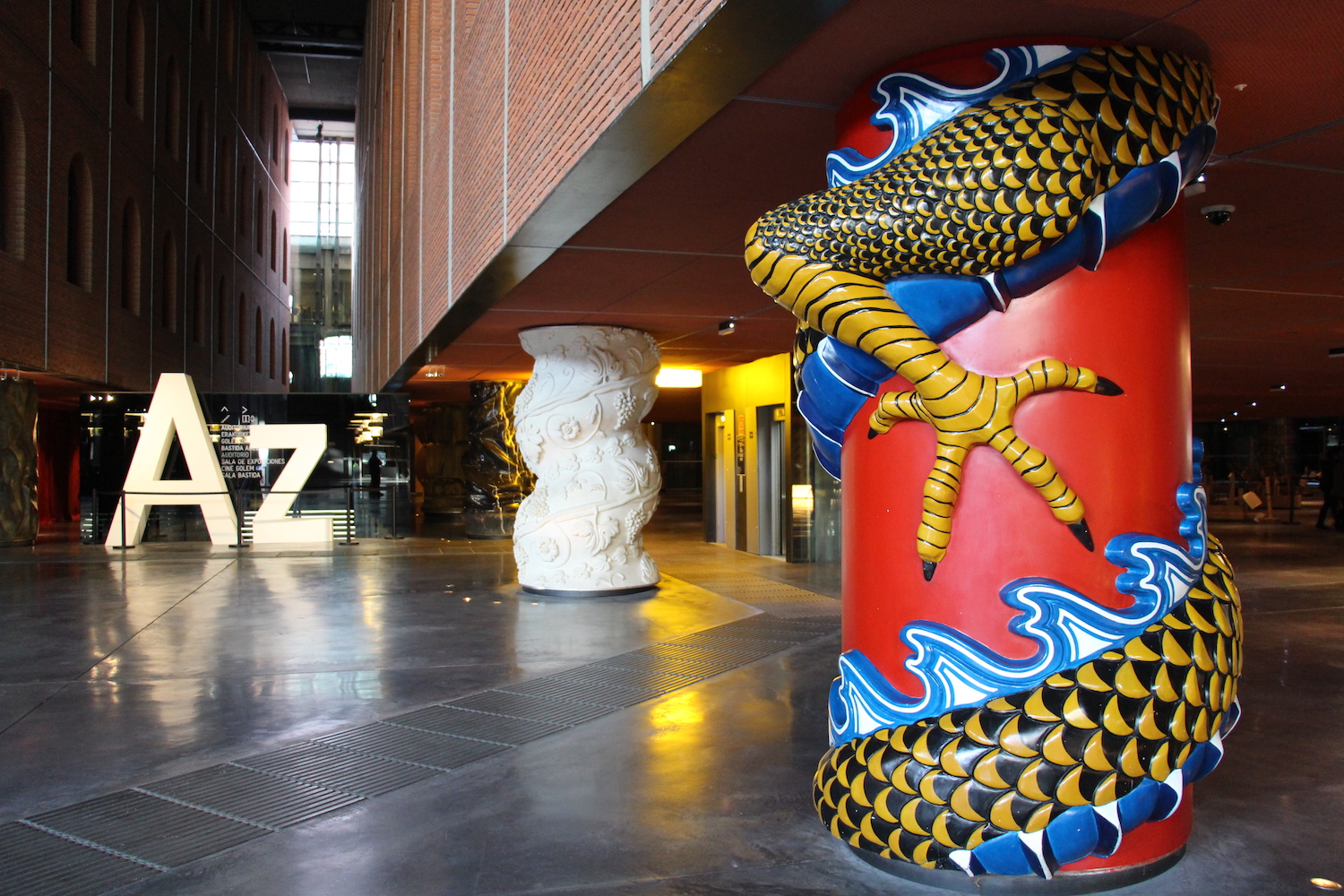
To complete your loop of the city centre, take a trip to Azkuna Zentroa, a former wine warehouse that was transformed into a multipurpose arts hub by Phillippe Starck in 2015. The site’s three interior buildings are supported by a series of forty-three columns that showcase craftmanship and heritage in something of a post-modern patchwork. Along with a cinema and glass-bottomed rooftop swimming pool, the center also features a contemporary gallery that is currently presenting …And The Things We Do, which examines the intersection between art, robotics and ecology (until 16 September).
If your schedule allows, consider taking the funicular to Artxanda mountain. This little red rail car has been running since 1915 and get you to the summit in a matter of minutes. For the price of a normal public transport fare you can scale a mountain, take in the view of the city beyond and grab one last pintxos.





